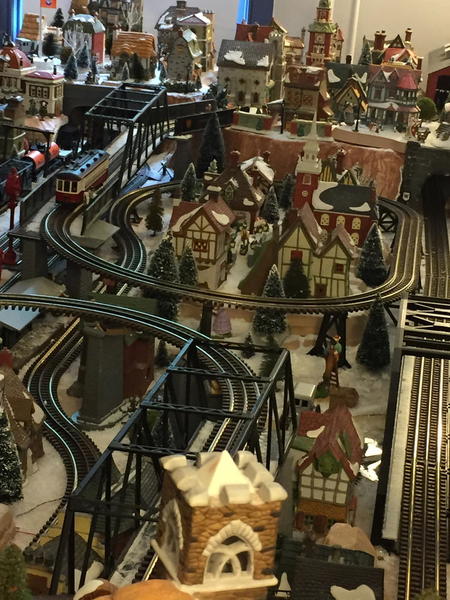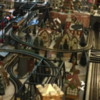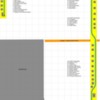I added an asymmetric U-shaped upper level to my layout with 1x8 boards cut to 4-feet sections for convenient installation section by section. For stability, I added a one-inch trim edging all around. I created the shelf primarily as the base for 35 DEPT 56 lighted porcelain buildings from the NORTH POLE VILLAGE collection. The shelf sections are painted "Christmas White." See the attached track plan and pix.
I supported the shelf sections with MTH elevated trestles screwed to the undersides - six trestles per section. I modified the "top" of each plastic trestle to fit flush to the underside of each shelf and then screwed the "bottom" of the trestles to the layout platform below - very sturdy and no sagging.
I installed three short trolley lines of O27 track on that level with lighted bumpers at all ends. I used a PC power supply (90 watts, DC) for trolley track power; its output is routed to a black box and split into three branches, with three small adjustable voltage controllers inside for individual speed control of each trolley line. The two trolleys and one MTH Santa Handcar have DC can motors, so DC track power is a good match.
The DEPT 56 buildings (some of which are animated) and accompanying figures are the "scenery," and the trolley lines provide continuous movement. I'm not a skilled scenic effects guy, so there are no snow-covered trees or "real plastic snow drifts." But it works for me, my great-grandsons, and their friends.
Mike Mottler LCCA 12394
mottlerm@gmail.com















